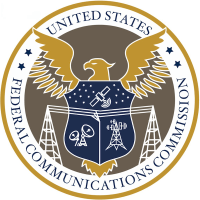
 The FCC has adopted seven changes to its rules to “better reflect current developments in the radio industry and ensure that our technical rules are accurate, up-to-date, and consistent”.
The FCC has adopted seven changes to its rules to “better reflect current developments in the radio industry and ensure that our technical rules are accurate, up-to-date, and consistent”.
The first change removes the maximum rated transmitter power limit for AM stations with the agency affirming their conclusion that an equipment limitation on transmitter power is outdated and unnecessary given our current reliance on actual operating antenna input power as the most accurate and effective means of ensuring that AM stations adhere to their authorized power limits.
The second change is to eliminate inconsistencies in the non-commercial FM band for the requirements of community of license coverage. Conflicting rules currently state that NCE stations must cover “at least a portion of the community of license” or “50% of their community of license or 50% of the population in their community with a 60 dBu signal strength predicted contour.” To create consistency, applicants must now show that their predicted 60 dBu contour will cover at least 50% of the relevant community of license or reach 50% of the population within the community.
Next the FCC has agreed not to adopt the proposal to eliminate the rule change proposing
“the use of FM transmitting antennas in the immediate vicinity (i.e. 60 meters or less) of other FM or TV broadcast antennas must include a showing as to the expected effect, if any, of such approximate operation.” But it is changing the typo created in 1984 to replace approximate with the original wording of proximate.
The FCC also amends the definition of “AM fill-in area” for FM translators to define the area as “The area within the greater of the 2 mV/m daytime contour of the AM radio broadcast station being rebroadcast or a 25–mile (40 km) radius centered at the AM transmitter site” as opposed to the lesser.
Other changes include updating the signal strength contour overlap requirements for NCE FM Class D stations to harmonize with the less restrictive contour overlap requirements applicable to all other NCE FM station classes, eliminating the requirement that stations operating between 76-100MHz protect grandfathered common carrier services in Alaska, and distance separations between U.S. station and stations in Canada and Mexico to reflect current treaty requirements.
FCC Actions
KBNP Inc. Business/Conservative Talk 1410 KBNP Portland OR has been issued a Notice of Violation for failing to drop from its 5kW day power to its 9 watt night power at its required sunset time. Following a complaint, an FCC Enforcement Agent monitored KBNP on January 12 when it was required to drop power at 5:00 and observed zero change in power between 4 and 6pm.
The FCC has entered into Consent Decrees with the following licensees for failing to maintain their online public files:
- Ashley Communications, Inc. licensee of KLCY and KVEL Vernal UT
- Kyros Media Corp. licensee of KWXW Kermit TX
- Pescadero Public Radio Service, Inc. licensee of KPDO Pescadero CA
- Wayland Baptist College licensee of KWLD Plainview TX
Deletions
Monticello Media has turned in the license for 710 WFNR Blacksburg VA. WFNR went silent in January 2019 before resuming operation in January 2020 from a temporary longwire antenna on the site of co-owned 1460 WRAD Radford. That station had taken over the News/Talk programming heard on WFNR when it went silent in 2019.
FM Changes
SBS Spanish CHR “El Zol 106.7” WXDJ Fort Lauderdale/Miami applies
